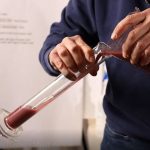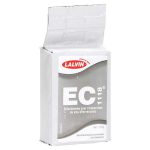How to Avoid a Stuck Fermentation during the Spring Wine Harvest
How to avoid a stuck fermentation

How can you tell if you have a stuck fermentation?
- Your wine is stuck at 2-5 Brix for more than a few days
- Your wine tastes very sweet
What causes a stuck fermentation?
- High sugar levels – 26+ Brix
- High fermentation temperatures
- Low nutrient levels
- Must not punched down or mixed during fermentation
- Inncorrect yeast strain
So.. how can you avoid it?
- If you have high Brix you can water back your must
- You can ice down your must with dry ice or frozen water jugs
- Add the correct amount of nutrients during fermentation
- Punch down and mix must reguarly
- Research and add the appropriate yeast
Not using yeast? Doing a native ferment? Here are some tips to avoid a stuck fermentation
- Keep cellar CLEAN – the cleaner the cellar the less bacteria has the opportunity to flourish and kill your batch
- Check your Brix and make sure they are manageable, if high, water back
- Keep track of your fermentation temperatures
- Keep the temperature in your winemaking cellar as constant as possible
A stuck fermentation can be painful. We highly suggest you take the neccessary steps to avoid it!
Need to fix your stuck fermentation? Check out our video on WinemakingInstructions.com and this Fixing a Stuck Fermentation Blog Post.
For exact measurements and instructions, follow the directions on the manufacturer’s packaging, contact a winemaker at Musto Wine Grape Company for assistance, or download our Full Class offering at WinemakingInstructions.com.
We’re here to help when you need it
As stated above, Musto Wine Grape offers a variety of products as well as services including testing and support. Email winemaker@juicegrape.com or call (877) 812 – 1137 to speak with someone who can assist you.
EC-1118 Wine Yeast: Product Spotlight
What makes EC-1118 so great?
EC-1118. It’s an excellent strain to be used in a wide variety of wines. This includes red and white, including sparkling, fruit wines, late harvest wines and cider. It has a strong competitive character that will inhibit wild yeasts, and restart stuck fermentation due to it’s great alcohol and sulfate tolerance. Being a very neutral yeast, it will have very little effect on the varietal character of the grape. It ferments fully, and flocculates well, producing compact lees. It has extremely low production of foam, volatile acid and hydrogen sulfide (H2S) and it ferments well over a wide range of temperatures (50 to 86 degrees Fahrenheit), making it one of the most favorable and popular wine yeasts.
Considering EC-1118 for your next wine batch? Click here to be directed to our store to purchase online, or call us at (877) 812 – 1137 to place an order with one of our associates. We can also provide a step-by-step instructional for re-hydrating your yeast and adding it to your wine. Whether you’re a newbie home winemaker or a pro, we’re here to help!
The Winemaker’s Think Tank: Vol 32 – “What do I do if I have a stuck fermentation?”
What’s the Winemaker’s Think Tank?
Every Thursday we will post about a few frequently asked questions that our winemaker has answered. If you have a winemaking question you would like to have answered, please email us at support@juicegrape.com and we will try to get into next week’s post. Cheers! 🙂
What do I do if I have a stuck fermentation?
Sometimes, even though we take great care as winemakers to avoid it, we can get caught with a stuck fermentation. Yeast are incredible creatures, capable of very rapid reproduction, but they do have their limiting factors. It is very important to know the limitations of the certain yeast strain that you are using for your wine. Evaluate your must’s pH to ensure that it is above 3.2, the lower pH environmental threshold for most yeast strains. Take into consideration the alcohol tolerance of the yeast that you selected. If you take the initial Brix level and multiply it by .55, you will have a pretty close estimate of your ending alcohol by volume. Make sure that you haven’t put in a yeast that is unable to handle the rising alcohol levels of the must. Another important factor to consider is the temperature of the must. All yeast strains have a preferred temperature window in which they like to work and reproduce. Because fermentation is an exothermic reaction, check your temperatures (if making reds always take a measurement under the cap) and be sure they haven’t gotten so warm that the yeast may be dying off. The opposite is also true, ensuring that your juice or must have warmed up enough to allow the yeast to begin their processing. Lastly, another important factor to consider in the health of your fermentation is the nutrition of your yeast. Aside from the sugar that they consume, yeast also need proteins, vitamins, and minerals to complete a healthy fermentation. Using a nutrient, such as Fermaid, will give the yeast the other elements needed to properly process the juice.
After the careful evaluation of these factors, you may need to add a small amount of water, nutrients, or heat or cool the must/juice. A winemaker at Musto Wine Grape is happy to help you with the amounts and timing of these additions. If all of these factors have been evaluated and adjusted for, prior to fermentation, and you still have a stuck fermentation, you will need to restart the fermentation. Please contact support@juicegrape.com and a trained winemaker can help you with a restart procedure.
We hope this information helps with your winemaking. If you have any follow up questions or winemaking questions in general, please email us at support@juicegrape.com.









Recent Comments